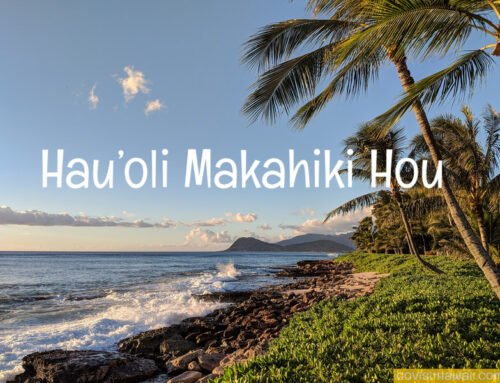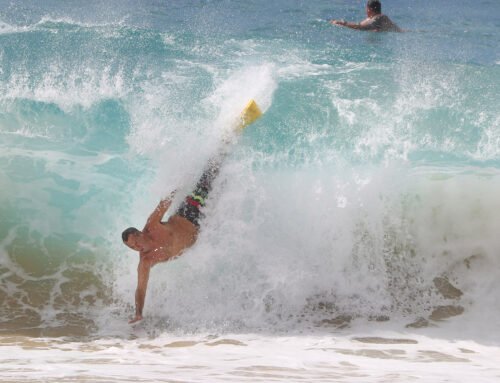Over 7,000 species of marine plants and animals live in Hawai‘i’s waters, and for snorkelers, some are easier to spot than others.
Before diving any deeper, a few guidelines: Avoid any contact with marine life, especially with coral, which are fragile living creatures that can be damaged by your touch. That’s actually the policy at Hanauma Bay and other marine life conservation districts, says Gavin Iwai, outreach program coordinator for the Hanauma Bay Education Program.
“Everything is protected here. So, there’s no fi shing, no taking shells, sand fl owers, especially no touching the animals. So leaving everything in its place,” Iwai says.
Katie Hearther, the Hanauma Bay program’s educational specialist, says she hopes that people take these principles “to any other future reefs that they might visit, even if it’s outside of Hawai‘i.”
Here are the top 10 marine life species you are most likely to encounter while snorkeling along local shorelines.
1: Rock-Boring Urchin (‘Ina Kea)
The most common urchin in Hawai‘i can be found near shallow rocky shores exposed to constant wave action and on reef fl ats mingled with oblong urchins.
2: Banded Urchin (Wana)
The most common long-spined urchin in Hawai‘i can be found on rocky shores. Be careful: Wana have venomous spines that are easily broken.
3: Black Sea Cucumber (Loli Okuhi Kuhi)
Hawai‘i’s most common large sea cucumber can be found exposed on sandy reefs, in the shallows and at depths down to 100 feet. When the loli okuhi kuhi is disturbed, it emits white sticky threads.
4: Convict Tang (Manini)
These fish can be found alone or in large schools, usually near shallow reef slopes as they feed on algae reef flats. This Hawaiian species has a small black bar under its pectoral fin.
5. Hawaiian Whitespotted Toby
This fish does not have a Hawaiian name though it is endemic to the Islands. They are shy but are also known to sneak up on other fish and bite their fins. You can usually find these fish among the rubble on the seabed.
6: Sharpnose Mullet (Uouoa)
This fish also tends to be found at the bottom of the ocean, where it grazes on algae. They swim in fast moving schools and have sharp, upturned mouths.
7: Reef Triggerfish (Humuhumunukunukuāpuaʻa)
This is the official state fish of Hawai‘i. Pua‘a means pig, describing the fish’s nose, which resembles a pig’s snout. They feed on sea urchins, so their eyes are far back on their bodies to avoid being poked by the urchins’ spines. When they are nesting, they sometimes chase or attack snorkelers who get too close; it’s best to calmly back off when this happens. Don’t worry: Their bite is not dangerous.
8: Saddle Wrasse (Hīnāea Lauwili)
The most abundant wrasse in Hawai‘i live on the rubble bottom of the ocean. The super-males of the species have a white bar that can appear behind their orange saddle.
9: Blackspot Sergeant (Kūpīpī)
This damselfish, commonly found in surge zones and inside reefs, can be identified by a black spot near their tails. Males are darker colored with defined white vertical bars when they are courting or defending eggs.
10: Yellowstripe Goatfish (Weke‘ā)
You can identify this fish by the black spot near its middle and yellow strip across its body. Weke‘ā are most commonly seen hovering in middle depths or resting on the sand. Its two barbels – the slender, whiskerlike sensory organs near its mouth – are used to find food buried in the sand.
On Jan. 1, 2021, Hawai‘i banned the sale and distribution of sunscreens that contain the chemicals oxybenzone and octinoxate after studies showed the chemicals harmed Hawai‘i’s coral and other marine life.
“Here at Hanauma, when people come in, I usually ask them, ‘Did you buy it (sunscreen) in Hawai‘i?’ ” Iwai says. “And if they did, then typically, they should be OK, because they ban any sale of sunscreen that has those types of ingredients.”
At the Hanauma Bay gift shop, visitors can exchange sunscreen purchased outside the Islands for reef-safe sunscreen for half off the price. “We live in such a special place,” Hearther says. “We’re the most isolated island chain in the world. And because of that, about 1 in 4 marine species will be endemic here or found nowhere else in the world, which is really special.”
















Leave A Comment